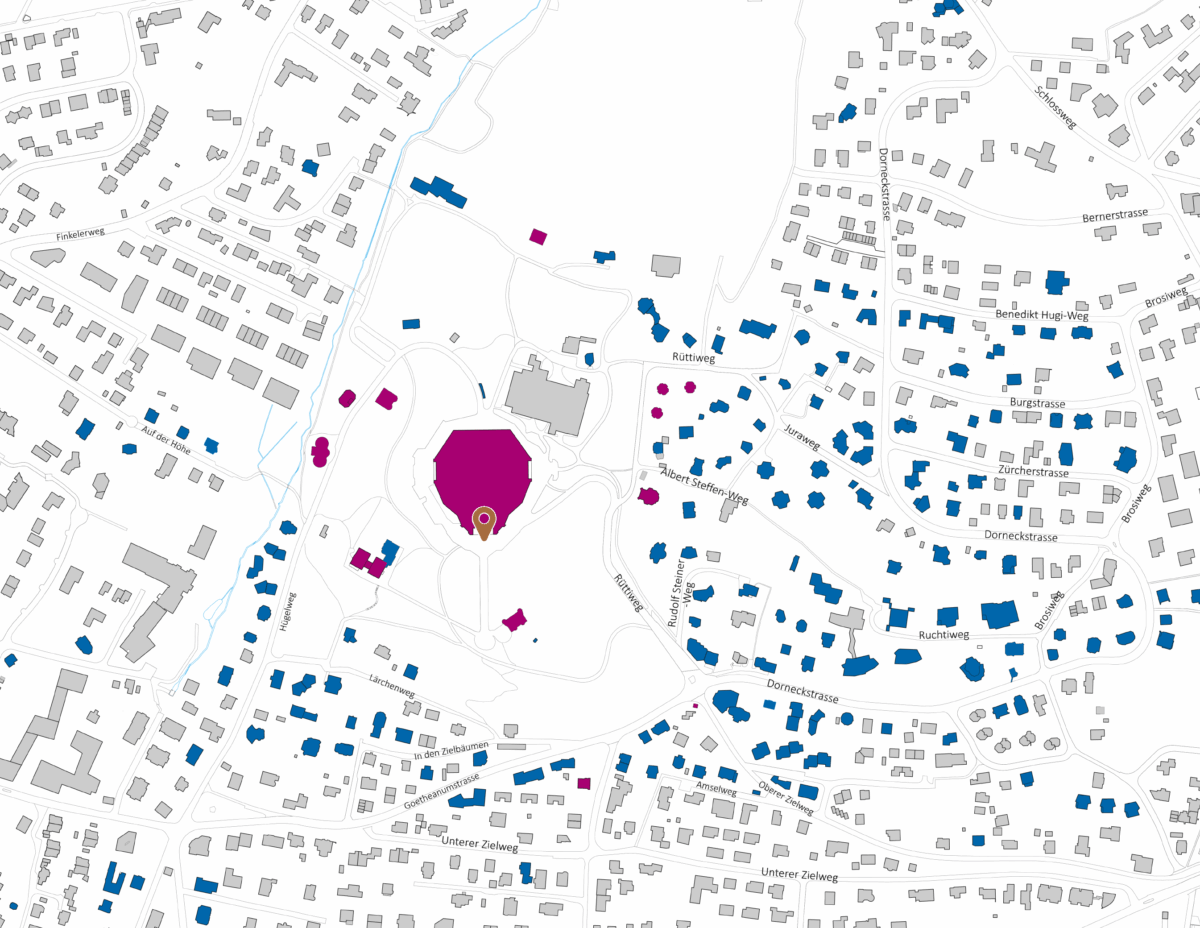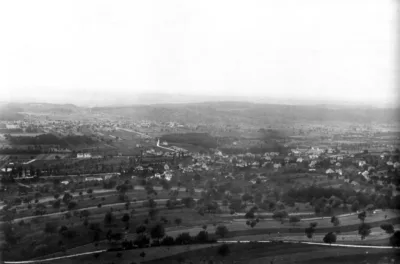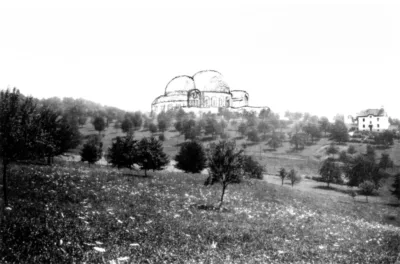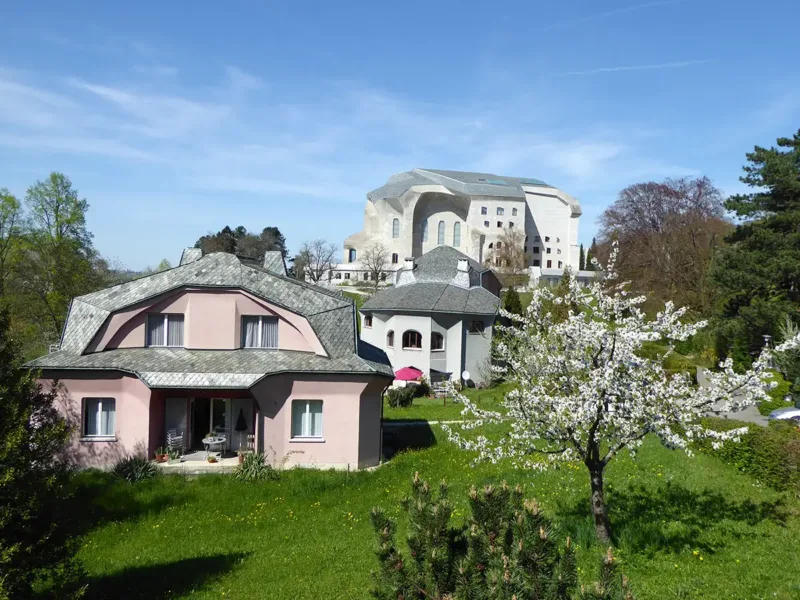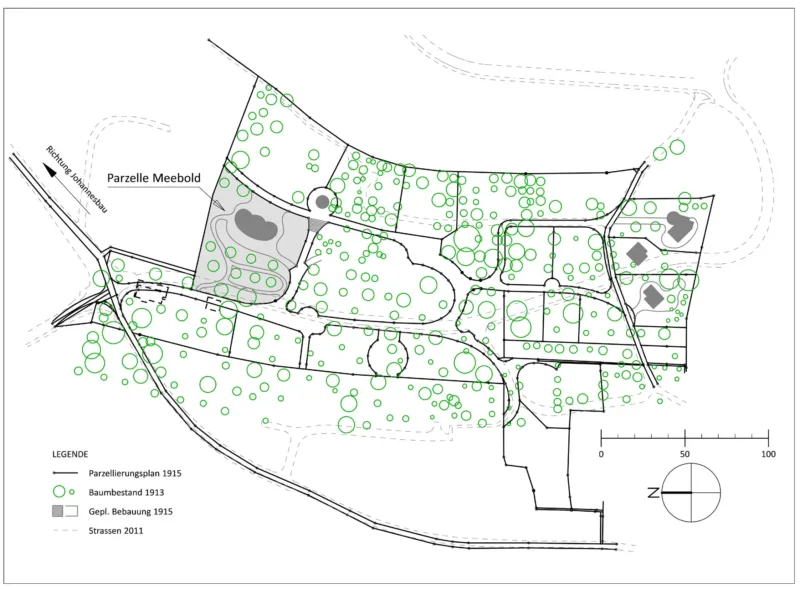1. Landscape
The formal language of the landscape
Figures from the surrounding area
The Goetheanum and the surrounding sculpturally and organically shaped buildings were planned into a rich natural and cultural landscape in Dornach. Situated on the northern edge of the Jura mountain range, the view from the Goetheanum hill extends over the Birs valley into the expanse of the Burgundian Gate and the Upper Rhine Valley, to the Vosges mountain range and part of the southern Black Forest.
The hills of the Jura with their chalky gray rocky outcrops formed the backdrop for old villages, orchard-covered meadows and fields interspersed with streams. Relics from Celtic and Roman times, castles, church towers and the Hermitage were an expression of the way of life and world view of the inhabitants of this region.
The orientation towards the points of the compass and the firmament already played a special role in the precursor plans for the Goetheanum. On the Dornach hill, this goal could be further extended in harmony with the landscape. Architecture, nature and landscape design should form a special unity and enhance each other’s effect.
The streets of the first colony plans were laid around the existing fruit trees, the terrain was designed in such a way that its qualities became particularly visible, and the buildings were positioned in relation to the cardinal points and to each other in such a way that they could speak to each other and extend into the vastness of the space.
Task: Experience the landscape forms of the Goetheanum terrace close up and in the distance. Embedding the buildings in the terrain.
Discover the surroundings
Further stations
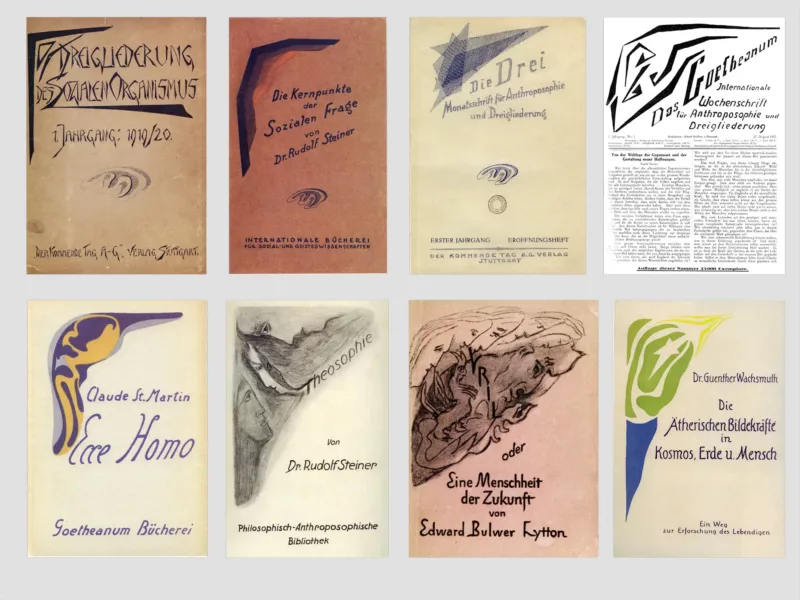
2. Links
The buildings of the Dornach Colony were consciously created from the anthroposophical world view. They are connected in many ways with other branches of anthroposophy, as an expression, as a framework, as the result of development processes.
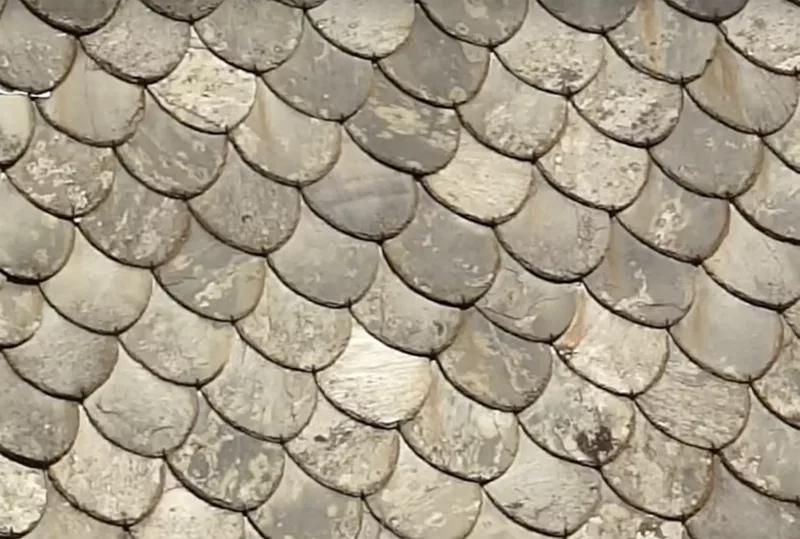
3. Material
In addition to the forms, some special materials also characterize the building on the Dornach hill. Norwegian slate, exposed concrete or colored plaster, wood are important elements of the special atmosphere around the Goetheanum.
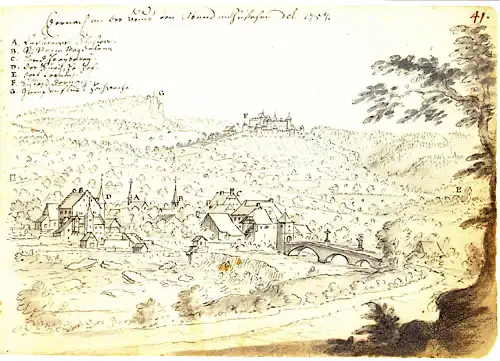
4. Environment
From the very beginning, the links to the Dornach community were diverse and not always clear. The anthroposophists who wanted to build were an economic factor, a foreign body, an enrichment and a change agent. Without them, however, neither the Anthroposophical Society nor Dornach would be what they are today.
Location
